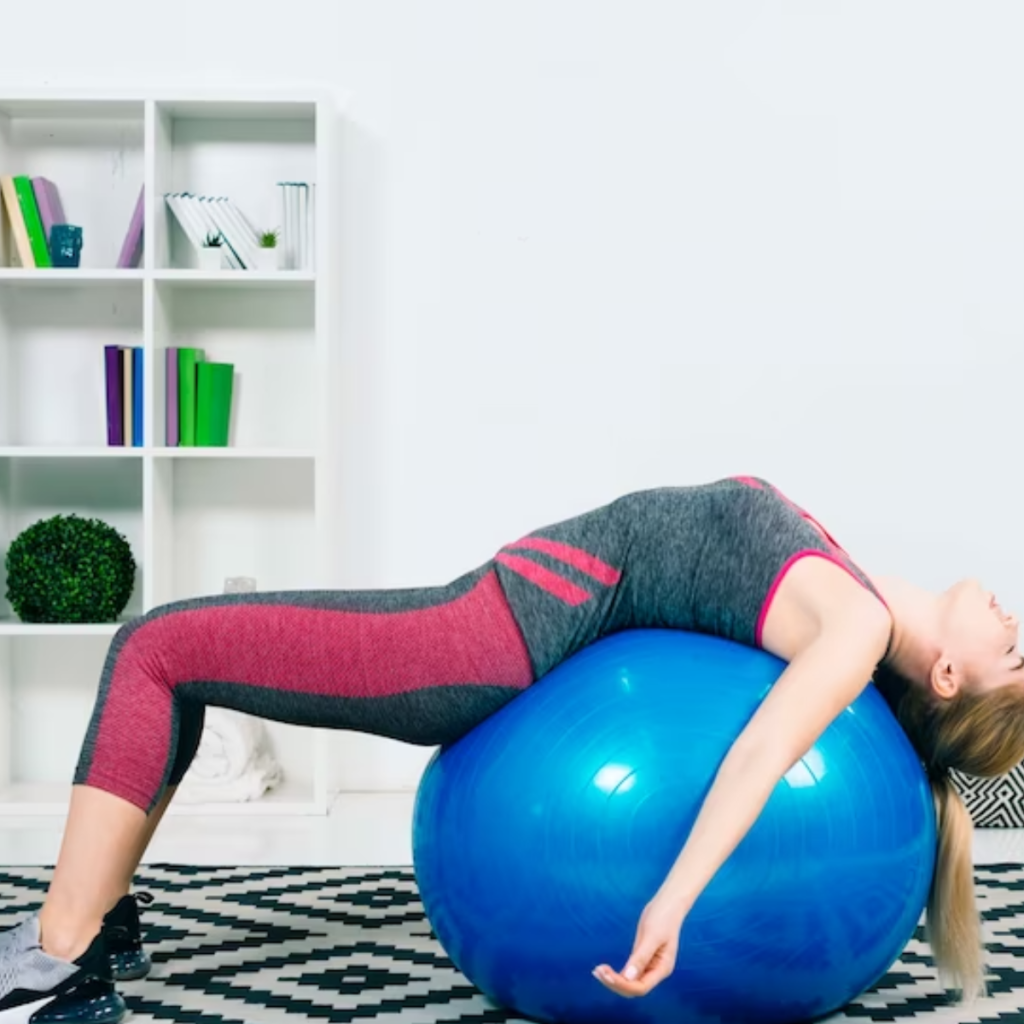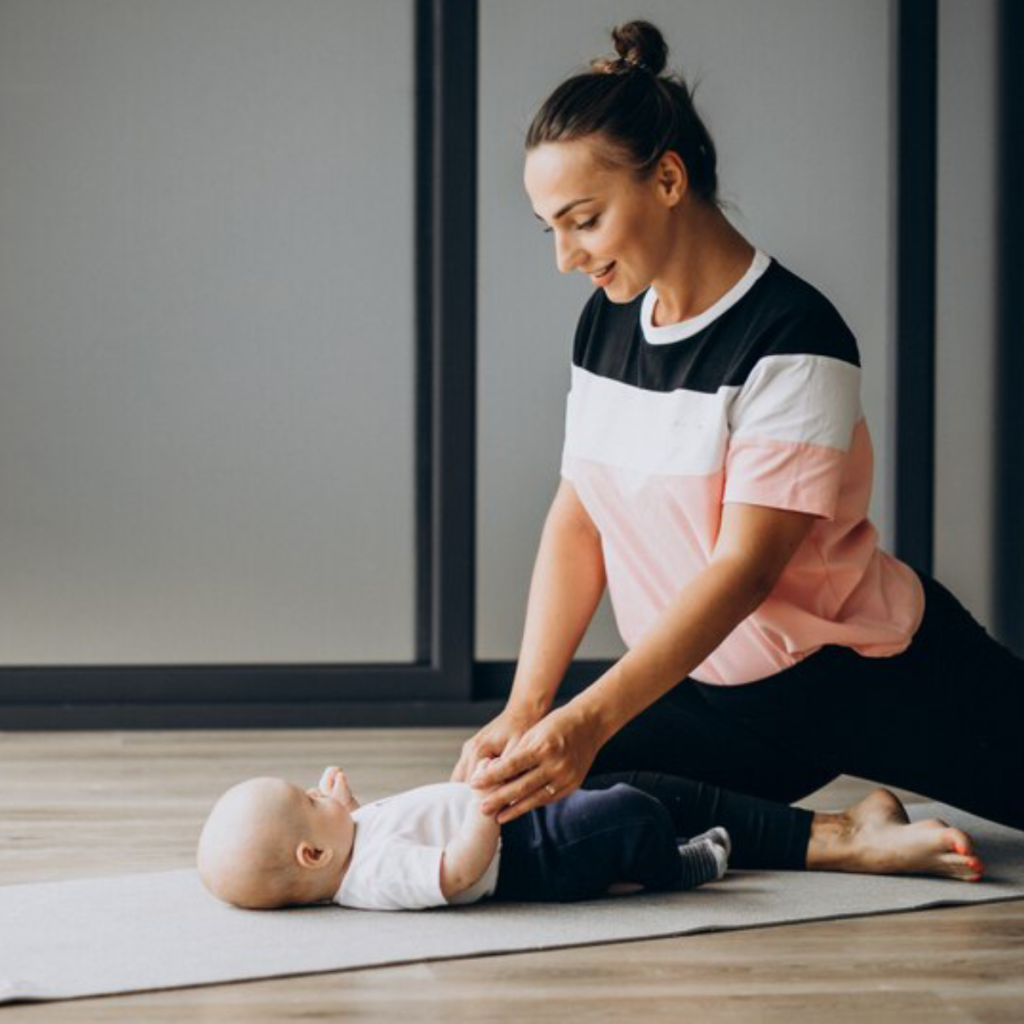Discover how incorporating yoga and Pilates into your postpartum routine can provide relief from back pain.
How Yoga and Pilates Can Help Relieve Postpartum Back Pain
After the incredible journey of pregnancy and childbirth, many new mothers find themselves grappling with an unexpected guest: postpartum back pain. But fear not, for there are some powerful tools in your self-care arsenal that can help alleviate this discomfort. In this article, we will explore the fascinating world of yoga and Pilates and their effectiveness in combating postpartum back pain. So grab your yoga mat and let’s dive in!

Understanding Postpartum Back Pain
First things first, let’s get acquainted with this pesky pain. Postpartum back pain can be triggered by a variety of factors, such as hormonal changes, weakened abdominal muscles, and the constant bending and lifting associated with caring for a newborn. It can range from a dull ache to sharp, shooting pains that make even the simplest tasks feel like herculean feats.
But why does postpartum back pain occur? Let’s dive deeper into the causes of this discomfort. During pregnancy, a hormone called relaxin is released to loosen ligaments and prepare the body for childbirth. Unfortunately, this hormone can also loosen the ligaments around the spine, leading to instability and pain. The weight gain and shifting center of gravity during pregnancy can further exacerbate the problem, putting extra strain on your back muscles.
Now that we understand the causes, let’s take a closer look at the common symptoms of postpartum back pain. It’s important to be aware of these signs so you can identify if you’re experiencing this postpartum plight. Look out for persistent backache, stiffness, muscle spasms, and difficulty performing daily activities. If you find yourself relating to these symptoms, it’s time to bring out the big guns – yoga and Pilates!
Yoga for Postpartum Back Pain
Yoga is a gentle and effective way to alleviate postpartum back pain. The combination of stretching, strengthening, and relaxation techniques can help relieve muscle tension and improve flexibility. Certain yoga poses, such as cat-cow stretch, child’s pose, and downward-facing dog, specifically target the back and can provide much-needed relief. Additionally, practicing deep breathing exercises during yoga can help reduce stress and promote overall well-being.
When starting a yoga practice postpartum, it’s important to listen to your body and take it slow. Begin with gentle poses and gradually increase the intensity as you feel comfortable. It’s also a good idea to consult with a certified yoga instructor who specializes in postpartum recovery to ensure you’re practicing safely and effectively.
Pilates for Postpartum Back Pain
Pilates is another fantastic option for relieving postpartum back pain. This low-impact exercise method focuses on strengthening the core muscles, including the abdominal and back muscles, which can help improve posture and alleviate pain. Pilates exercises often involve controlled movements and precise alignment, making it a safe and effective choice for postpartum recovery.
Some Pilates exercises that target the back and core include pelvic tilts, bridging, and the hundred. These exercises help strengthen the deep abdominal muscles, which in turn support the spine and reduce back pain. As with any exercise program, it’s important to start slowly and gradually increase the intensity to avoid overexertion.
In addition to yoga and Pilates, other self-care practices such as heat therapy, massage, and proper body mechanics can also contribute to the management of postpartum back pain. Remember, every body is unique, so it’s essential to find what works best for you and your specific needs.
The Role of Yoga in Alleviating Postpartum Back Pain
Yoga, with its centuries-old wisdom and graceful movements, can be a game-changer when it comes to saying goodbye to the back pain blues. One of the key benefits of yoga is its ability to improve flexibility and strengthen muscles, leading to better posture and reduced discomfort.
Postpartum back pain is a common complaint among new mothers. The physical demands of pregnancy and childbirth can take a toll on the body, particularly the back. The weight gain, hormonal changes, and the strain of carrying a growing baby can cause muscles to become tight and weak, leading to pain and discomfort.
Fortunately, yoga offers a natural and effective way to alleviate postpartum back pain. Through a combination of gentle stretches, strengthening poses, and mindful breathing, yoga can help restore balance and harmony to the body.
Key Yoga Poses for Back Pain Relief
Now, let’s slither our way into some yoga poses that specifically target postpartum back pain. Child’s pose, cat-cow stretch, and downward dog are excellent for stretching out tight muscles and increasing spinal flexibility. These poses gently elongate the spine, relieving tension and promoting a sense of relaxation.
Bridge pose and cobra pose can help strengthen the back muscles, providing much-needed support to your overworked spine. These poses engage the muscles in the back, including the erector spinae and the multifidus, helping to improve stability and reduce pain.
Remember, take it slow, listen to your body, and avoid any positions that feel uncomfortable. It’s important to honor your body’s limits and not push yourself too hard, especially in the early stages of postpartum recovery.
The Benefits of Regular Yoga Practice
Consistency is key when it comes to reaping the rewards of yoga. Regular practice can not only alleviate back pain but also improve your overall well-being. By reducing stress, increasing blood circulation, and promoting relaxation, yoga presents a holistic approach to postpartum recovery.
Stress is a common companion during the postpartum period. The sleepless nights, hormonal fluctuations, and the demands of caring for a newborn can leave new mothers feeling overwhelmed and exhausted. Yoga provides a sanctuary for relaxation and self-care, allowing you to find moments of peace and tranquility amidst the chaos.
In addition to its physical benefits, yoga also nurtures the mind and spirit. The practice of mindfulness and deep breathing can help cultivate a sense of inner calm and balance. By connecting with your breath and being present in the moment, you can cultivate a sense of gratitude and appreciation for your body’s incredible journey through pregnancy and childbirth.
So, roll out that mat and salute the sun with a grateful heart! Embrace the healing power of yoga and give yourself the gift of self-care as you navigate the beautiful and transformative journey of motherhood.
The Impact of Pilates on Postpartum Back Pain
Now, let’s shift gears and explore the wonders of Pilates. Developed in the early 20th century by Joseph Pilates, Pilates focuses on core strength, flexibility, and controlled movements. This low-impact exercise method can work wonders for your postpartum back. Say hello to a stronger, more resilient mommy body!
Pilates is not just a workout; it’s a holistic approach to fitness that targets specific muscle groups, including those in your back. By engaging the deep muscles in your core, Pilates helps to strengthen and stabilize your spine, alleviating postpartum back pain.
One of the key exercises in Pilates for strengthening the back is the Pilates roll-up. This exercise involves lying on your back, arms extended overhead, and slowly rolling up to a seated position. The controlled movements engage the muscles in your back, promoting stability and reducing pain.
Another effective Pilates exercise for postpartum back pain is the pelvic tilt. This exercise involves lying on your back with your knees bent, feet flat on the floor. By tilting your pelvis forward and backward, you engage the muscles in your lower back, helping to strengthen and support the spine.
The superman pose is yet another fantastic Pilates exercise for postpartum back pain. This exercise involves lying face down on a mat, extending your arms and legs. By lifting your arms and legs off the ground simultaneously, you engage the muscles in your back, promoting strength and stability.
Incorporating these Pilates exercises into your routine can help you regain strength and confidence in no time. By targeting the deep muscles in your back, Pilates helps to rebuild the strength and stability that pregnancy and childbirth may have diminished. This, in turn, provides support to your back muscles, reducing pain and improving overall functionality.
But the advantages of Pilates for postpartum recovery go beyond just physical healing. Pilates is known for its mind-body connection, promoting mindfulness and relaxation. By focusing on your breath and being present in each movement, Pilates helps to reduce stress and anxiety, which are common during the postpartum period.
Furthermore, Pilates can also help improve your posture, which may have been affected by pregnancy and breastfeeding. By strengthening the muscles in your back and core, Pilates helps you maintain proper alignment, reducing strain on your back and promoting a more upright posture.
So, if you’re looking for a safe and effective way to alleviate postpartum back pain, look no further than Pilates. With its focus on core strength, controlled movements, and mind-body connection, Pilates can help you not only heal your body but also sculpt a powerhouse of strength and resilience.
Safety Precautions for Practicing Yoga and Pilates Postpartum
Before you jump into a downward dog or roll out that Pilates mat, it’s important to keep a few safety precautions in mind. Your body has undergone significant changes, so it’s crucial to ease back into physical activity gently. Remember, postpartum recovery is not a sprint – it’s a marathon.
When to Start Yoga and Pilates After Childbirth
As much as we want to hop onto the yogi and Pilates bandwagon immediately, your body needs time to heal properly. Generally, it’s recommended to wait until at least six weeks postpartum to start practicing yoga or Pilates. However, always consult with your healthcare provider, as each body is unique and may require more time to recuperate.

Tips for Safe Practice
You’ve got the green light from your healthcare provider, and you’re ready to get your groove on – but wait, there’s more! Start slowly and gradually increase the intensity and duration of your practice. Remember to listen to your body’s cues and back off if something doesn’t feel right. Hydration, proper nutrition, and a good night’s sleep are your allies in this journey. And lastly, don’t forget to pat yourself on the back regularly – you’re doing an amazing job!
Incorporating Yoga and Pilates into Your Postpartum Routine
Now that you’re armed with knowledge about the powers of yoga and Pilates, it’s time to weave them into your daily routine. The key here is balance – creating a workout schedule that suits your lifestyle and allows for self-care.
Creating a Balanced Workout Schedule
Life as a new mom is a juggling act, but fear not, you’re a superhero. Design a workout schedule that respects your daily commitments and allows for flexibility (pun intended!). Aim for a mix of yoga and Pilates exercises, alternating between them to keep things fresh and exciting. Remember, self-care isn’t selfish – it’s essential for your well-being!
Making Time for Self-Care and Exercise
Baby steps, my friend, baby steps. Finding time for self-care and exercise can be a challenge, so get creative! Involve your little one by practicing gentle postpartum yoga stretches together or incorporating Pilates exercises while your baby naps. And don’t forget to reach out to your support system – they’re there to lend a helping hand (or hold your baby while you do some planks!). You deserve this time to focus on yourself and recharge, mama!
So, there you have it – a journey through the realms of yoga and Pilates, and their magical ability to alleviate postpartum back pain. Remember to be patient with yourself, listen to your body, and most importantly, have fun! Embrace this chapter of motherhood with open arms, a strong back, and a heart full of gratitude. You’ve got this!



